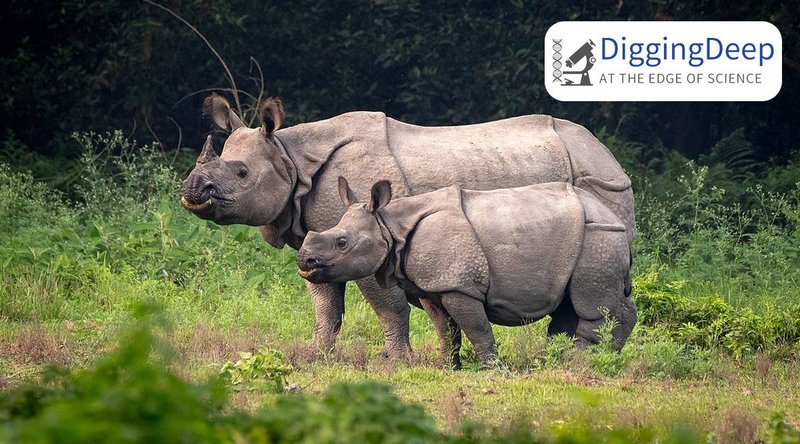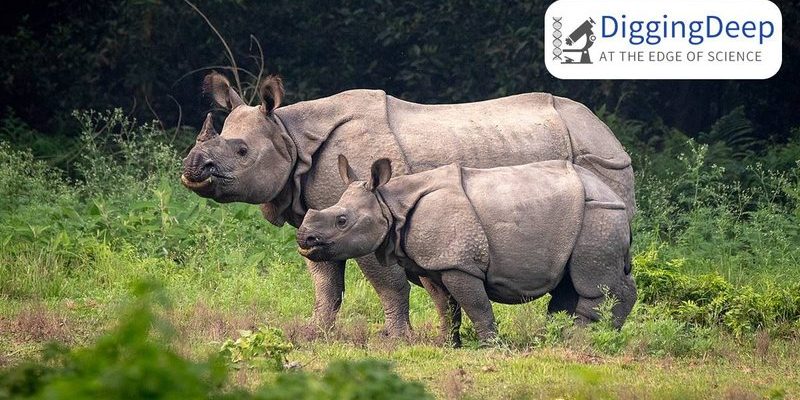
Imagine for a moment that the Earth is a gigantic family tree, with a myriad of branches sprouting from a single trunk. Each species represents a unique branch, twisting and turning over time due to various environmental factors and adaptations. The story of the Indian rhinoceros is just one of those branches. It provides a glimpse into how species adapt, survive, and sometimes struggle to thrive in their environments.
So, let’s dive into the evolutionary history of the Indian rhinoceros, exploring where it came from, how it has changed over time, and what that means for its future in our world.
Origins of the Indian Rhinoceros
The tale of the Indian rhinoceros begins millions of years ago. To understand its origins, we need to go back to the Eocene Epoch, which started about 56 million years ago. During this time, ancestors of modern rhinos roamed the Earth. The earliest rhinos were not the hulking figures we see today; instead, they were more like tiny horses and lived in lush, wooded areas.
Over time, rhinos began to adapt to different environments. Some adapted to grasslands and savannas, while others remained in forests. The Indian rhinoceros is thought to have diverged around 25 million years ago from its closest relatives, the Sunda rhinoceros, which inhabit areas of Southeast Asia. This split led to distinct evolutionary paths, shaped by the habitats in which they lived.
As these ancestors thrived, they developed unique traits over generations. For example, the Indian rhino evolved a thicker skin to fend off predators and a large, curved horn made of keratin—a substance similar to what our nails are made of. This adaptation not only helped in defense but also played a critical role during mating rituals and territorial disputes.
Adaptations to Environment
One of the most striking features of the Indian rhinoceros is its impressive size and unique appearance. As it evolved, the Indian rhino adapted to its specific habitat in the lush grasslands and river valleys of India and Nepal. These adaptations weren’t just for looks; they played a crucial role in survival.
The thick, wrinkled skin of the Indian rhino is a fascinating topic. This skin isn’t just tough; it also helps them regulate their body temperature. In the hot sun, the rhino can wallow in mud pools, which not only keeps it cool but also protects its skin from the sun’s harsh rays and pesky insects. You might be wondering why they do this—it’s the equivalent of putting on sunscreen and a spa treatment all at once!
Moreover, their ability to thrive in wet, swampy areas gives them an edge in their natural habitat. This environment is rich in food sources like grasses and leafy plants, which are crucial for their diet. The Indian rhinoceros has a unique way of grazing; it can easily use its dexterous lips to pull vegetation from various surfaces, something that helps satisfy its hefty appetite.
Impact of Climate on Evolution
Climate has played an enormous role in the evolutionary journey of the Indian rhinoceros. Throughout history, the Earth has gone through numerous climatic shifts, from warm periods with dense forests to cooler, drier phases. As the environment changed, so did the Indian rhinoceros.
In periods of drought, for instance, when forests receded and grasslands expanded, the Indian rhino had to adapt. While other species may have struggled, it found ways to utilize the new grassland habitats effectively. The ability to thrive on tougher grasses was not just a survival tactic; it also pushed the species to grow larger and stronger, which is essential for fending off predators.
During the Pleistocene Epoch, which started about 2.6 million years ago, conditions were often fluctuating. The Indian rhinoceros had to navigate these changes, facing challenges such as food scarcity and habitat reduction. As a result, it became more specialized, focusing on its specific ecological niche, which has allowed it to survive various climate challenges over time.
Threats and Conservation Efforts
Today, the Indian rhinoceros faces numerous threats that could potentially disrupt its evolutionary success. Historically, poaching was a significant issue, driven by the demand for rhino horns in traditional medicine. Unfortunately, this illegal trade continues to pose a severe threat.
Habitat loss is another critical challenge. As human populations grow, the lands that were once thriving ecosystems for the Indian rhino are being converted into agricultural fields, urban areas, and infrastructure projects. This shrinking of habitat not only reduces their living space but also disrupts migration patterns and access to food sources.
Conservation efforts are actively underway to protect the Indian rhinoceros. Protected areas, like the Kaziranga National Park in India, have made significant strides in preserving these magnificent creatures and their habitats. Anti-poaching initiatives and community awareness programs also play a vital role. Here’s the thing: a collective effort is necessary for conservation to succeed. Local communities being involved in protection efforts has shown promising results in safeguarding the Indian rhinoceros.
Future of the Indian Rhinoceros
Looking ahead, there’s hope for the Indian rhinoceros. While challenges remain, particularly in terms of habitat preservation and poaching, ongoing conservation efforts are making a difference. The commitment from governments, NGOs, and local communities serves as a powerful reminder that change is possible.
As the climate continues to evolve, so too will the Indian rhinoceros. It’s a resilient species that has adapted to change for millions of years. However, its future is not solely in the hands of evolution; it relies on us to ensure that it has a place in this ever-changing world. By understanding its evolutionary history, we can better appreciate the delicate balance of nature and the importance of protecting these incredible animals.
In summary, the Indian rhinoceros is more than just a large, impressive creature. Its story reflects a journey of survival, adaptation, and resilience. As we learn more about its past, we gain valuable insights into the role we play in securing a future for these remarkable animals. So, the next time you think about the one-horned rhino, remember, it’s not just about what you see—it’s about all the history behind it.

